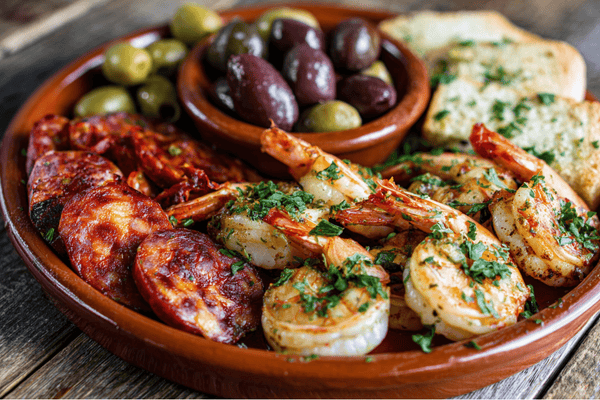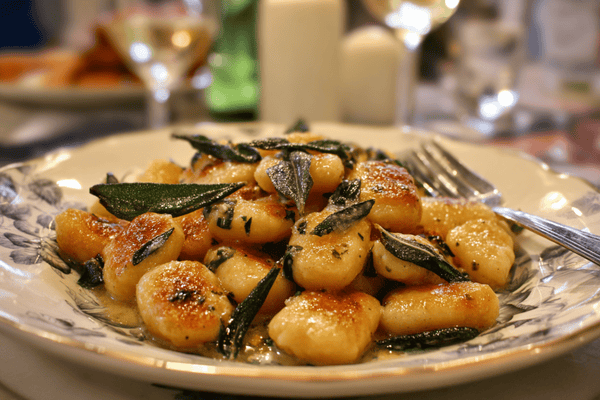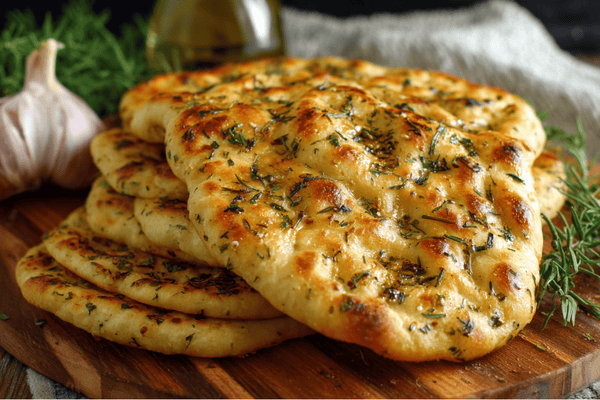
Japanese chefs' knives are high-quality and specialist knives that are adapted to preserve or enhance the flavour of Japanese cuisine. They also allow for ultra-fine precision of cuts to add a presentation to a dish.
With that said, you can also get multi-purpose Japanese chef knives that are capable of producing a range of different cuts on different food types. These all-round knives have been designed to match the functionality of the popular Western chef’s knives.
The best all-round Japanese chef's knife is a Santoku knife. A Santoku is a multi-purpose knife that is adept at cutting a range of foods which include meat, fish, and vegetables, and its name can be translated to ‘three virtues’, which means it’s suitable for mincing, slicing, and dicing for full versatility of use.
There is not a definitive answer to what the best all-round Japanese chef knife is, however, we’ve compiled a list of features that will help you decide what is best for you and we do of course weigh in with which knife we believe to be the best all-round Japanese chefs knife.
Table of contents
What Makes Japanese Knives So Good?
As soon as you take an interest in kitchen cutlery, knives, and in particular Japanese knives, you’ll soon realize that Japanese knives are held in very high regard with many considering them to be the best knives available.This is of course based on individual opinion as professional chefs and home cooks will have their own preferences whilst many people also prefer using a Western knife that has been manufactured in Germany or France.
With that being said, it’s generally accepted that Japanese knives are manufactured to a very high quality, and below are some of the characteristics that make these knives so highly renowned in both Japan and the Western world.
Material

The majority of Japanese knives are produced using a high-quality carbon-steel (otherwise known as Hagane) blend which allows these knives to be thinner, lighter, and hold a sharper edge for longer.
The reason the steel blend is such high quality is that many of these knives utilize Damascus steel which allows the finished product to be tougher and more resistant to shattering or chipping whilst also allowing the knife to hold a sharper edge.
It’s not just the blade material that is of high quality, the handle on these knives are often produced for performance and longevity. The commonly used ho wood is both porous and lightweight to not only provide a balanced weight to the knife but to also add resistance against cracking and splitting of the wood.
While you can certainly find cheap variants of Japanese knives, the majority make use of high quality materials in order to produce the desired effects mentioned above.
Blade

The blade on each type of Japanese knife is designed specifically for an intended purpose and this ties in with the material used allowing Japanese knives to be thin, lightweight, and hold an impressively sharp edge.
Most Western chefs' knives have a rounded edge and pointed tip which allows for rock chopping, a popular cutting technique, however, Japanese chefs' knives vary slightly from this design.
A traditional Santoku knife will have a sheep foot blade which has a straight edge, flat blade and is rounded from the spine to edge giving minimal to no tip on the edge of the knife. This is a safer blade style for novices however it means users need to cut with an up and down chopping technique known as push-cutting.
More modern Santoku knives combine the traditional Japanese blade style with some Western features and you will now find more Santoku knives with a rounded edge and pointed tip enabling the use of the popular rock chopping technique.
Sharpness

The sharpness of a Japanese knife edge is arguably the key feature with which these knives are mostly associated. As a result of using thin, yet tough, steel these knives can typically be ground to a very acute angle which results in an ultra-sharp edge.
When it comes to a knife-edge, the sharper it is the more precise and clean-cut you can get as the knife will pass through the cell membrane of the food with minimal damage. The easiest way to tell if a knife-edge is sufficiently sharp is by how much juice is left on the chopping board after use or whether food is stuck to the side of the knife after a cut.
A Japanese knife that is properly maintained will leave minimal juice on the chopping board after use and will also produce a clean cut so that no food is stuck to the side of the knife or partially cut.
To get this level of sharpness, you’ll find that most Japanese knives are sharpened to a 10 - 15 degree angle on one side of the blade. For a double bevel knife, this will give a 20 - 30 degree total angle for the knife while a single bevel knife will typically have an ultra-sharp 10 - 15 degree edge.
For comparison, a Western chef's knife will typically hold an edge with a 30 - 40 degree angle.
What's the Best All Round Japanese Chefs' Knife?

The Santoku knife is arguably the best Japanese chef's knife and this is justified by the fact that it is the most owned knife in Japanese homes. This popularity is not just restricted to Japanese kitchens though and this particular knife has become increasingly popular in the Western world providing serious competition for German and French chefs' knives.
Key Considerations
When deciding what the all-round best Japanese chefs' knife is, you need to consider a few key factors as what is defined as the ‘best’ will depend solely on what you need from your knife. A Japanese sushi chef will have very different requirements and needs compared with someone cooking at home a few times per day (or week).
Purpose
What you are going to use the knife for will heavily influence which knife is the best. If you mainly cut and prep vegetables then a Nakiri will allow for faster chopping with cleaner cuts whereas someone working with raw fish will find a Yanagi to be the most suitable option.
For general purpose cuts, the Santoku or Gyuto offer multi-purpose cutting functionality and will cover the vast majority of your basic cutting needs.
Maintenance
Maintaining your knife is a crucial aspect of knife care and performance that is of significant importance to Japanese knives. A single bevel Japanese knife will hold an incredibly fine and sharp edge however it will also require significant honing and sharpening to maintain the edge.
A single bevel edge can also be more prone to chipping or breaking as a result of being ground to such a fine angle.
A double bevel edge, popular in Western knives, is therefore highly advised for anyone needing a Japanese chef’s knife that is not a professional chef. A knife with a double bevel will typically have a slightly thicker blade and will be much easier to sharpen as it requires less skill or experience.
Size
The size of a Japanese knife will also influence how well it performs with specific cutting tasks. A larger knife does not always mean that it is used for heavy-duty cutting, however, aspects like the thickness of the blade and spine and overall weight will influence how the knife will perform.
A lightweight Usuba measuring 7” - 8” on average is ideal for precise cutting of vegetables, yet a smaller Deba with an average blade length of 6” - 7” is primarily used for deboning and filleting tough fish and meat.
In general, a chef's knife measuring 5” - 8” will be suitable for multipurpose use and again this is typically the size that a Santoku and Gyuto can be found to have.
Bottom Line
The best Japanese chef's knife will depend on how you need to use the knife and what food types you will use most frequently. While you can technically use any knife for a cutting task, Japanese knives have been developed over hundreds of years of craftsmanship to be perfectly suited to specific cutting tasks.The Santoku knife, as a general-purpose chef's knife, is probably the best Japanese chef's knife in terms of versatility and all-round functionality. It’s capable of a wide variety of cutting tasks and can be easily used on meat, fish, and vegetables making it an ideal all-purpose knife.
FAQs
Q: Is it best to buy a single knife or a set?
A: There is a lot to be said about Japanese knives, and what sets them apart is the professional quality.
I'm not the only one who believes this either! Especially in professional kitchens, chefs from different countries compare their professional-grade knives with those of Japan's. German professional chef Mark Furrer says "Japanese knifes are more expensive but worth it... ". And British Michelin-starred chef Heston Blumenthal also agrees, saying "the feel of a Japanese blade and its precision make it so much easier to use".
Q: Are Japanese knives sharper than German?
A: Yes, Japanese knifes are sharper than German knives. The main reason for this is that the blades of German knives are thicker and heavier, while the Japanese blade is lighter and finer in quality. This gives them extra strength to cut through things like tough meat.
Q: How long do Japanese knives last?
A: Japanese knives can last for a long time - sometimes decades - if they are cared for properly.
High-carbon stainless steel blades allow users to maintain the sharpness of the blade through proper care. The hardness and durability of these blades make them an excellent choice in professional kitchens, while at home they can be used to cut just about anything you might prepare on a cutting board.
Q: Why is Japanese steel so good?
A: Japanese steel is so good because of the precise alloying process. The Japanese are known for their rigor with quality control and making sure every finished product has consistent lines and polished edges.
With a high-quality raw material, regular checking (whether in or out of production), and lots of time, knowledge, energy, skill and patience invested in them at each stage - from refining right up to decoration - it's little wonder that you'll find this permeating through any blade made in Japan.
Q: What knives stay sharp the longest?
A: Good quality knives stay sharp the longest.
High-carbon alloys resist corrosion better than low-carbon steel because they form more protective surface layers when exposed to the air for long periods in comparison to low carbon steels.


